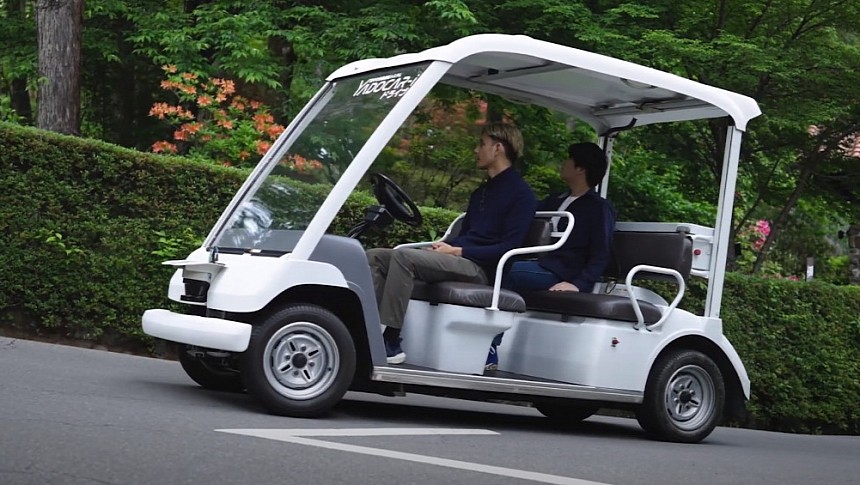Now that the electric powertrains for cars are firmly embedded into our world, the automotive industry is rapidly pursuing its next evolutionary goal: automated driving. But while most companies are aiming to give cars advanced self-driving capabilities for the enjoyment of their owners, a space agency is trying to utilize this tech to help people in need and even boost tourism.
Today's cars are almost all more or less automated. As per the current approach, dating back to 2004 when the Society of Automotive Engineers (SAE) first published the classification, there are five levels of autonomous driving, depending on what vehicles are capable of doing on their own.
Level 1 is when a car is capable of helping the driver with braking, acceleration, and engine speed, without completely controlling them. Level 2 allows the car to take full control of these systems in certain cases.
Level 3, the most widespread automation level in present-day cars, manifests itself through a variety of capabilities, including adaptive cruise control, lane-keeping assist, and so on. Even if the tech at Level 3 is fairly advanced, the driver still is in control of the car and must have their hands on the steering wheel at all times.
Level 4, something we don't completely have yet, will remove the need for driver control from the equation in certain conditions, as the car will drive itself down to steering.
Last but not least, Level 5 is full automation, and cars capable of this might not even be equipped with a steering wheel or pedals to begin with.
It's Level 4 (and later on Level 5) that a project being cooked up over in Japan is currently targeting. Called YADOCAR-i Drive, it's being put together by the Japanese space agency (JAXA) and tech companies Tokai Clarion and ATI.
YADOCAR is described as a system meant to take advantage of GPS to reach Level 4 automation. It's primarily being designed to be used in limited areas and serve transportation needs in depopulated areas, new towns (of which Japan has around 2,000), or as a last-mile solution in tourist areas.
All of these places, so far safe from the advancement of automated driving, are in need of vehicles that can move on fixed routes and on narrow roads, while traveling relatively slow – all ideal conditions for testing a Level 4 automated system.
YADOCAR will rely on a Japanese satellite positioning system called QZSS to create driving routes and on an augmentation service called Multi-GNSS ADvanced Orbit and Clock Augmentation - Precise Point Positioning (MADOCA-PPP).
The system will not be specifically developed for a certain vehicle, but it will be offered as an aftermarket solution "at the lowest price in the market" for whoever wants to use. The organizations involved say it will be ideal for deployment in two-seater microcars and 8-seater minibusses.
There is no info on when real-world testing on a large scale will begin (project is already ongoing), but JAXA says demos of the tech will take up to two years.
[YOUTUBE=https://youtu.be/H0bWSrzJjgQ
Level 1 is when a car is capable of helping the driver with braking, acceleration, and engine speed, without completely controlling them. Level 2 allows the car to take full control of these systems in certain cases.
Level 3, the most widespread automation level in present-day cars, manifests itself through a variety of capabilities, including adaptive cruise control, lane-keeping assist, and so on. Even if the tech at Level 3 is fairly advanced, the driver still is in control of the car and must have their hands on the steering wheel at all times.
Level 4, something we don't completely have yet, will remove the need for driver control from the equation in certain conditions, as the car will drive itself down to steering.
Last but not least, Level 5 is full automation, and cars capable of this might not even be equipped with a steering wheel or pedals to begin with.
It's Level 4 (and later on Level 5) that a project being cooked up over in Japan is currently targeting. Called YADOCAR-i Drive, it's being put together by the Japanese space agency (JAXA) and tech companies Tokai Clarion and ATI.
YADOCAR is described as a system meant to take advantage of GPS to reach Level 4 automation. It's primarily being designed to be used in limited areas and serve transportation needs in depopulated areas, new towns (of which Japan has around 2,000), or as a last-mile solution in tourist areas.
All of these places, so far safe from the advancement of automated driving, are in need of vehicles that can move on fixed routes and on narrow roads, while traveling relatively slow – all ideal conditions for testing a Level 4 automated system.
YADOCAR will rely on a Japanese satellite positioning system called QZSS to create driving routes and on an augmentation service called Multi-GNSS ADvanced Orbit and Clock Augmentation - Precise Point Positioning (MADOCA-PPP).
The system will not be specifically developed for a certain vehicle, but it will be offered as an aftermarket solution "at the lowest price in the market" for whoever wants to use. The organizations involved say it will be ideal for deployment in two-seater microcars and 8-seater minibusses.
There is no info on when real-world testing on a large scale will begin (project is already ongoing), but JAXA says demos of the tech will take up to two years.
[YOUTUBE=https://youtu.be/H0bWSrzJjgQ






